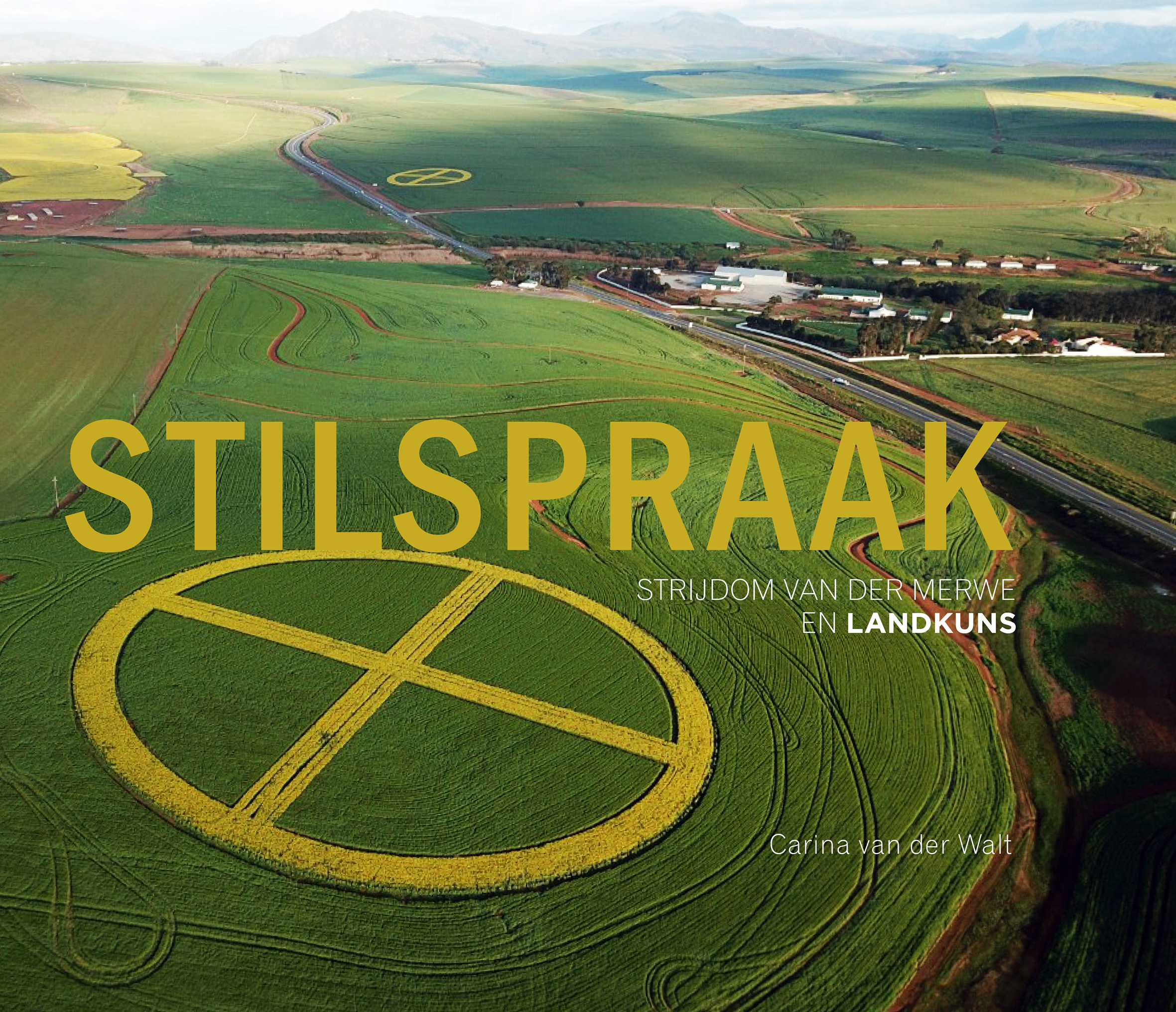Stilspraak is a richly illustrated and beautifully executed monograph on the work of the internationally renowned South African artist Strijdom van der Merwe.
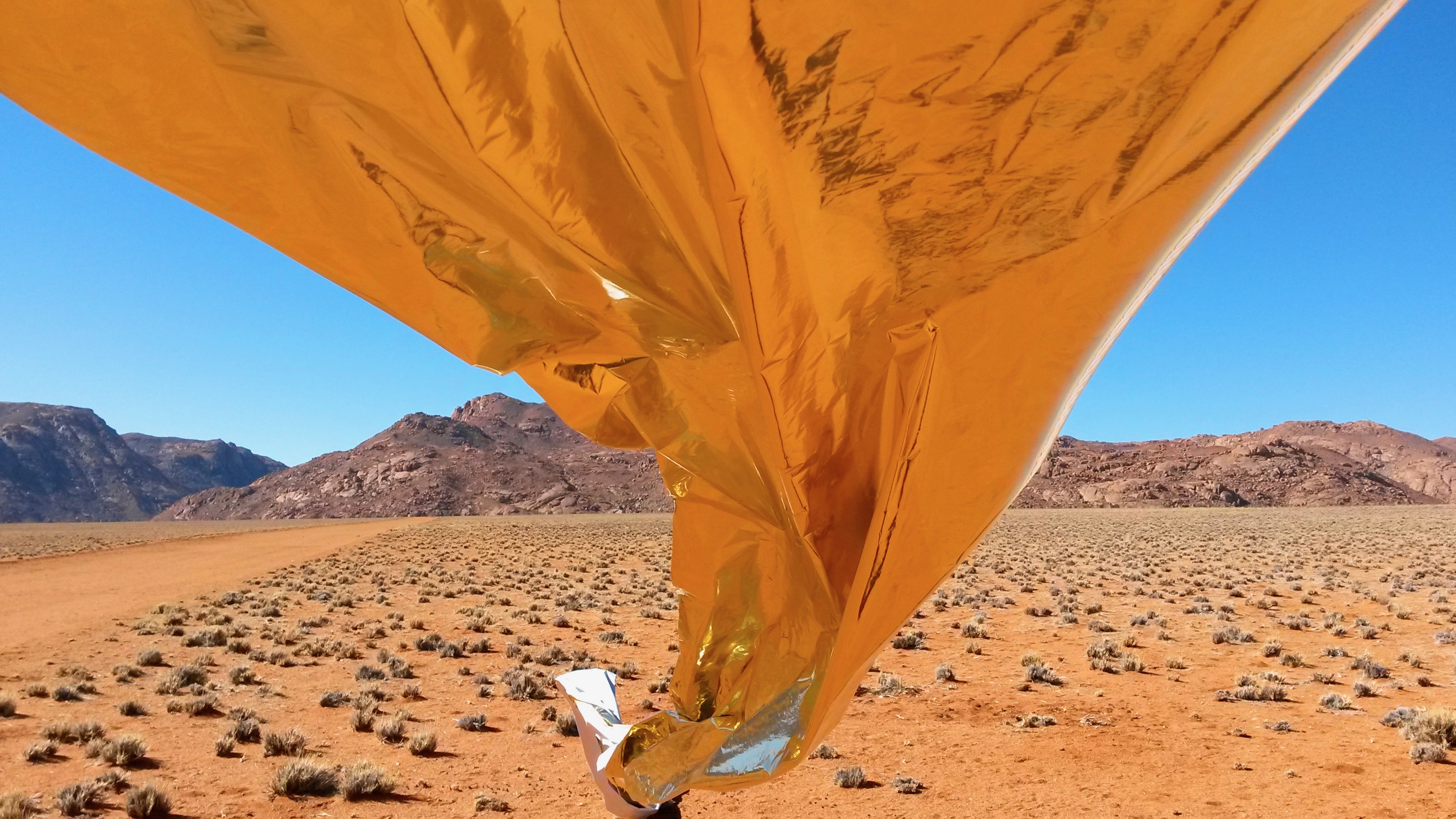
According to author Carina van der Walt, a South African poet and literary expert who also developed into an art journalist after moving to the Netherlands in 2007, land art is still a relatively unknown phenomenon, at least in South Africa. Land art originated in the 1960s: the flower power era with its resistance to any form of authority, the rise of the environmental movement, the student revolution, peace demonstrations and cultural “happenings”. In the late twentieth century, as people became more aware of global warming and a new environmental awareness emerged, interest in land art also revived.
Strijdom van der Merwe (1961) has been working as an artist for almost 25 years. He grew up on a farm in Meyerton (Gauteng) and studied art at Stellenbosch University. In 1996 he gave up his comfortable life as a graphic designer employed by the university to study sculpture in Prague (Czech Republic). He then continued his education in Utrecht (the Netherlands) and Cambridge (UK). His work can now be seen in galleries throughout South Africa and he receives invitations from all over the world to participate in art manifestations.
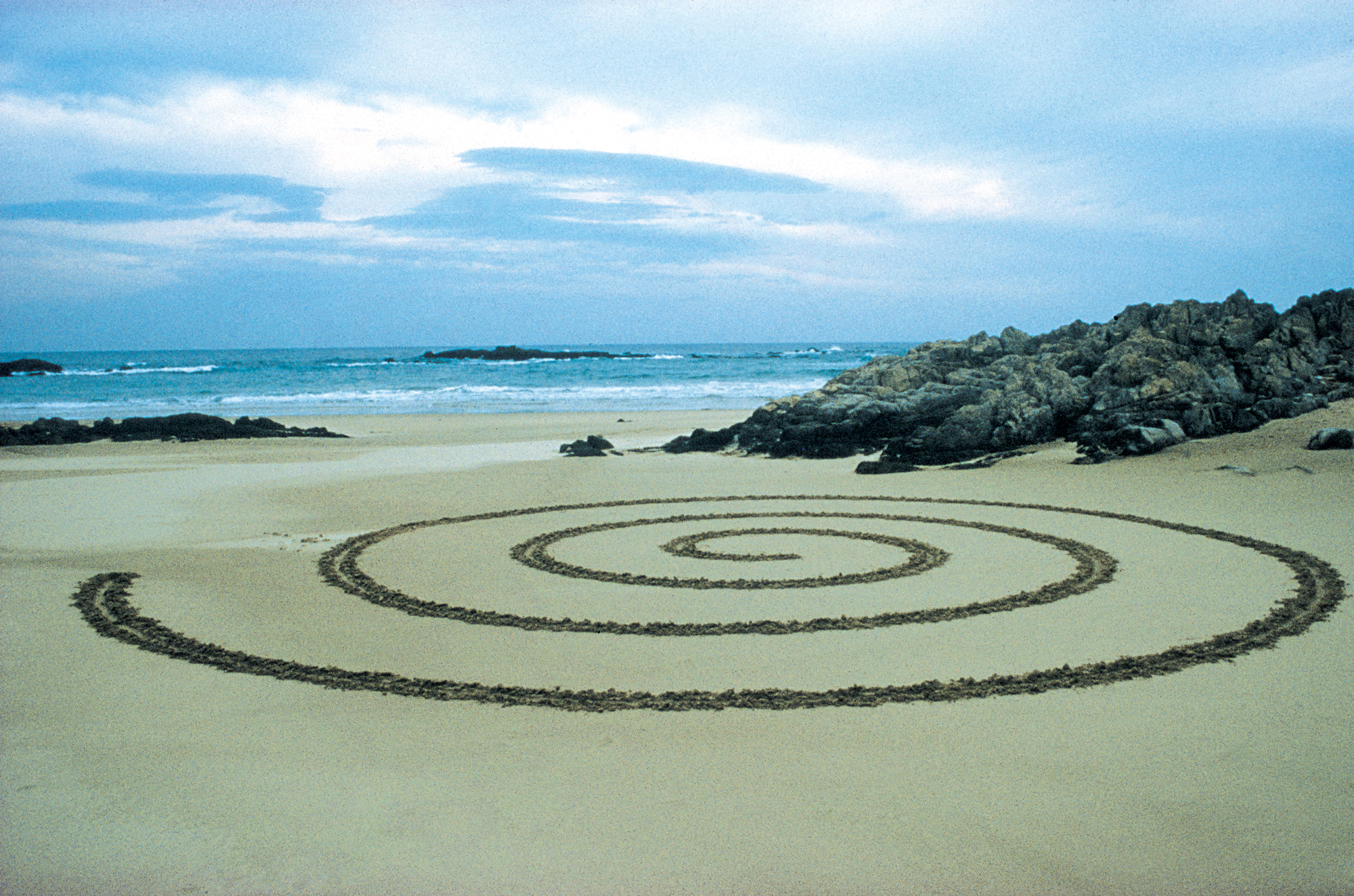
Despite his international stature, Van der Merwe is not all that well known in South Africa at all. Not even with the Afrikaner community where his roots lie. Stilspraak (silent speech), a cross over between a coffee table book and a scientific study, written in Afrikaans, therefore appears to be a deliberate attempt to introduce his work definitively to an Afrikaans-speaking audience. Van der Merwe actively participated in the making of the book. The author regularly uses quotes from conversations she has had with the artist.
To introduce Van der Merwe's work, Van der Walt works systematically. Maybe a little too systematic. She approaches the work from five angles: genres within land art, shapes, colors and light effects, spirituality and the use of poetry in Van der Merwe's work. All these aspects are highlighted by Van der Walt in separate chapters and sub-chapters.
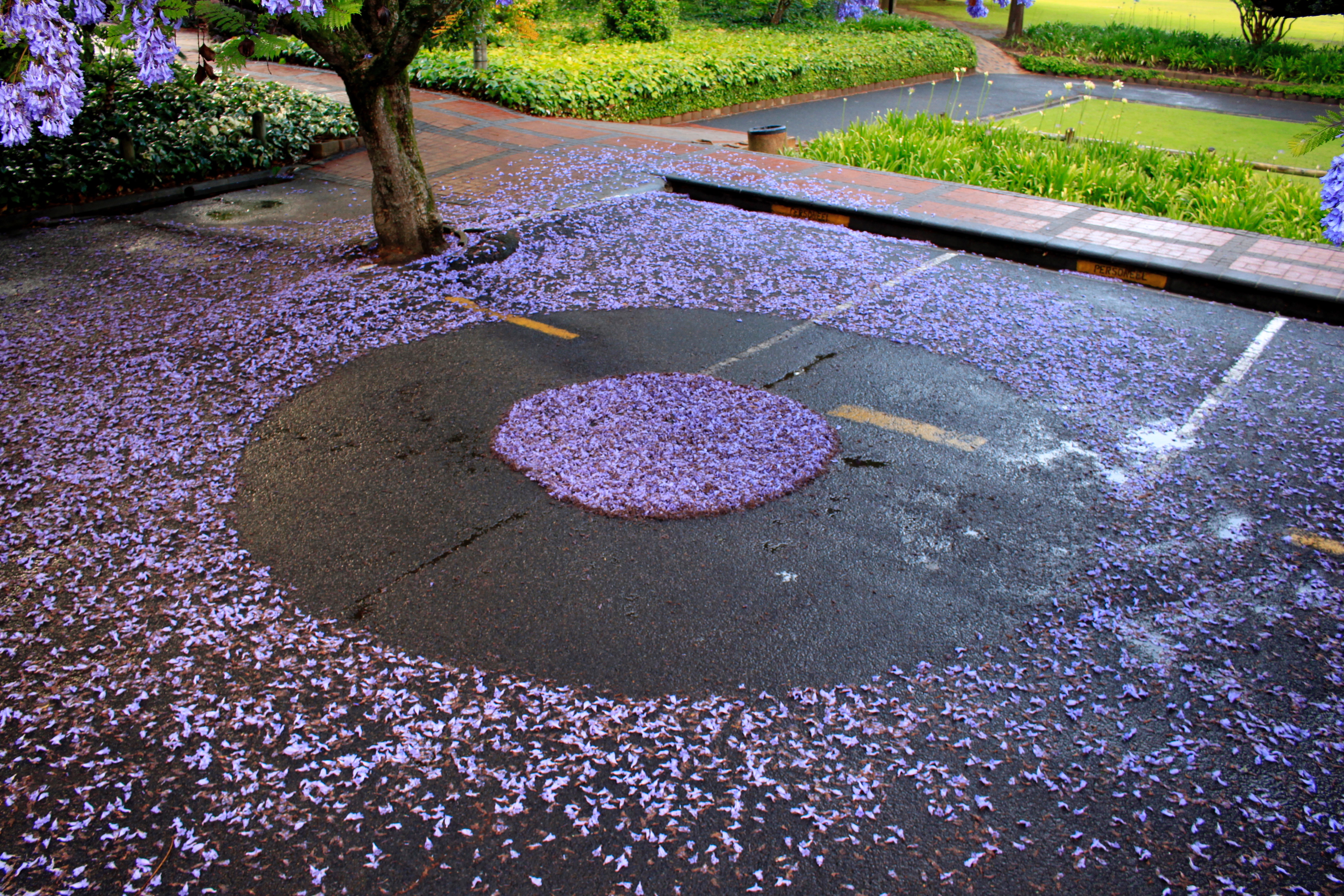
It is probably impossible to determine how many works of art Van der Merwe made, if only because some of them have been washed or blown away. Nevertheless, it seems as if Van der Walt treats his land artworks (but not the sculptures of his later career) more or less exhaustively. Sometimes her deep diving provides a surprising insight or a nice anecdote, and it must be said that, following Susan Sontag, she has clearly tried to formulate succinctly and clearly. But sometimes Van der Walt's division into overlapping categories leads to repetition, and in general her striving for completeness comes across as somewhat cramped. Then the large amount of text secretly makes you long for the lightness of a coffee table book.
Homo ludens
But Van der Merwe's oeuvre remains interesting. The artist is in his element when he can stroll around outside and is inspired by the landscape and the materials he encounters there, such as grass, moss, branches, leaves and stones. Van der Merwe is in awe of nature (Shell's plans for fracking in the Karoo infuriate him), but his work also contains an element of play and discovery. Often a photo or video is the only proof of the existence of an artwork, for example because it is in a place where no one goes, or because it is already surrendered to the elements. Land art sometimes requires a phlegmatic attitude or sense of humor from the artist, for example when a project for which large amounts of earth have been moved with bulldozers is suddenly abandoned or when a plant after a year of waiting emerges in the wrong place, or blossoms in a unforeseen color.
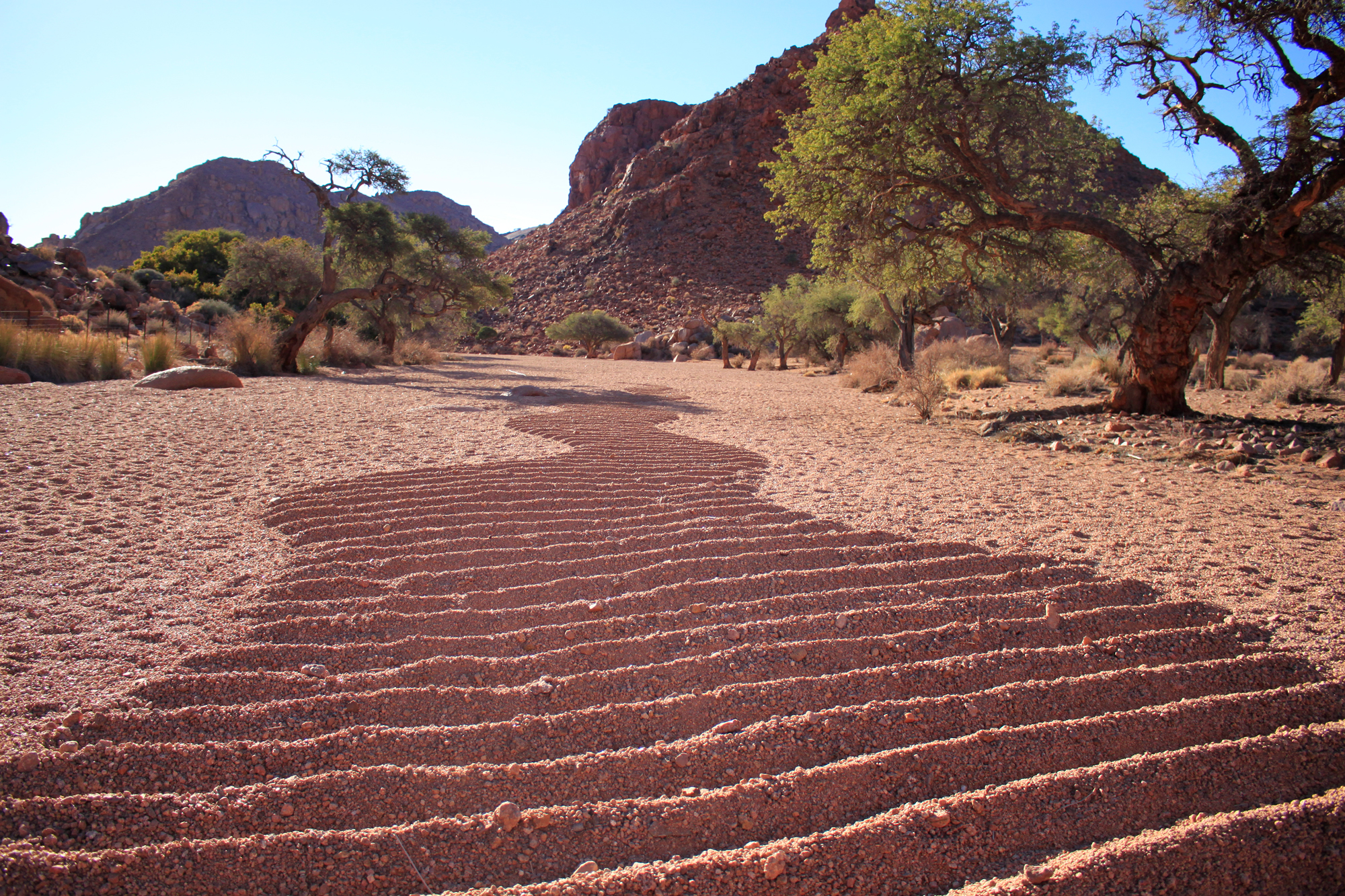
Van der Walt, a poet herself, is most at ease in the chapter on the different ways in which Van der Merwe uses poetry in his work. He has haikus on Tibetan prayer flags fan out across the plain and he plants a poem by Gert Vlok Nel on banners in the landscape. But according to Van der Walt, especially in artworks with geometric shapes, he also uses poetic stylistic means such as repetition, contrast, symbolism and suggestion. Unfortunately, the outcome of all those comparisons between word and image is a bit predictable: "The answer remains evasive, as well in the art work and in the poem."
Land art from Africa
To position him, Van der Walt regularly compares a work of art by Van der Merwe with that of a fellow artist. Land artists also seem to rhyme a lot themselves, both within their own oeuvre and amongst each other. Precisely because the works are located in public space, it is easy to adopt an idea from someone else and build on it. Instead of “plagiarism” (or the less loaded “intertextuality”), Van der Walt chooses the term “varied repetition”.
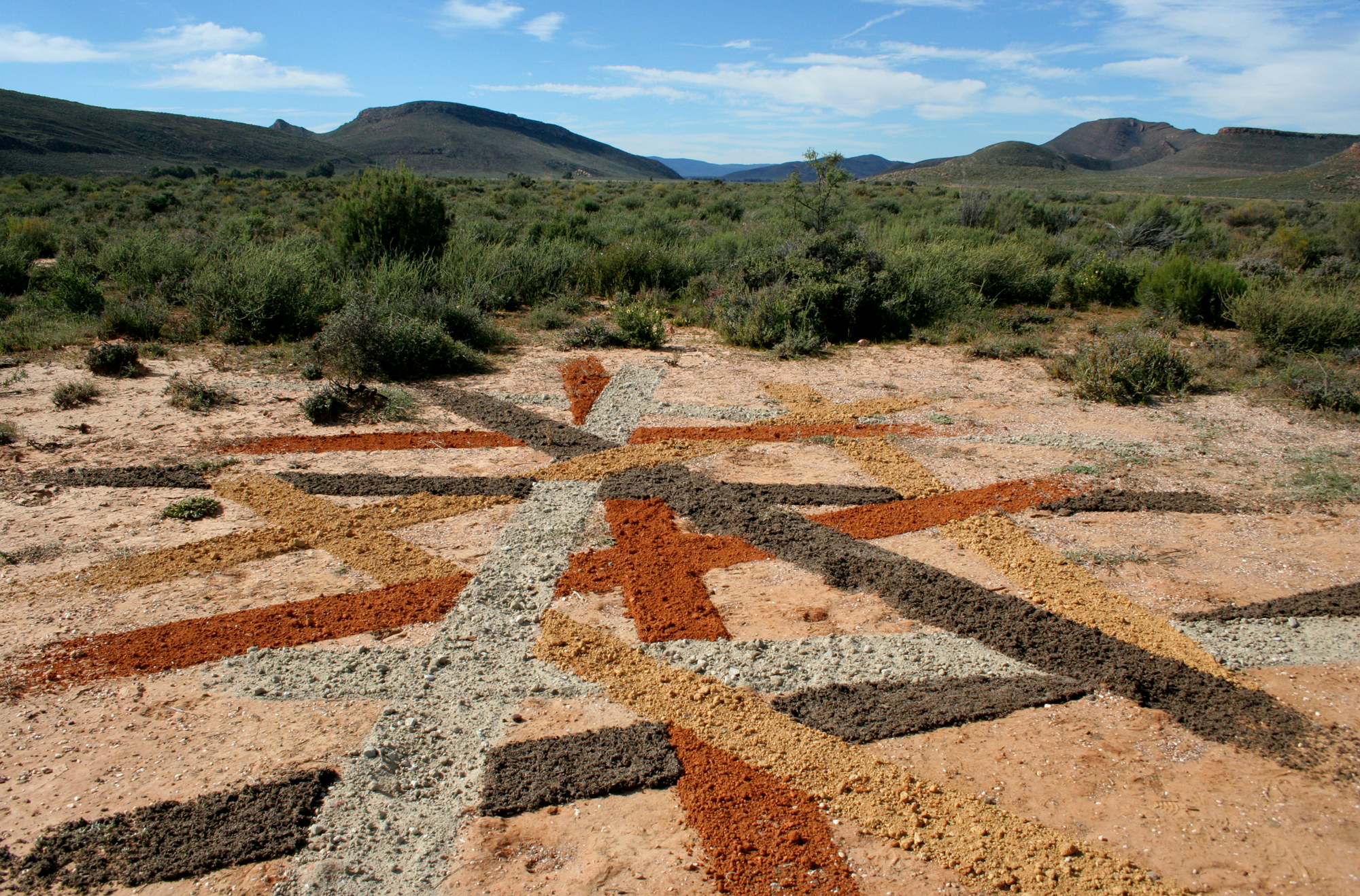
Land art is considered a Eurocentric genre, dominated by white men. But now there are also female artists active, as well as artists from various cultural backgrounds and all parts of the world. With his love for the often barren South African landscape and his references to, for example, San culture, Strijdom van der Merwe makes a unique contribution to the genre, that is unmistakably rooted in the African continent.
Carina van der Walt, Strijdom van der Merwe en landkuns. SUN Press (imprint from African Sun Media), 2020. 278 p., illustrated (full color). ISBN 978-1-928480-64-8 (book), R650; ISBN 978-1-928480-65-5 (ebook), R520.

